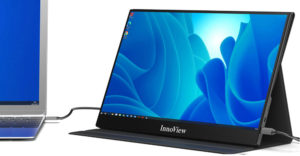
Give office workers familiar with the Microsoft XP operating system an opportunity to try the same navigational tasks at a Linux-based desktop. Then step back and wait for the reaction. First will come the surprised look. Then questions like “where did the command line go?” will soon follow.
That’s the typical scenario Morgan Spencer, public sector industry manager for Novell, often sees played out whenever he participates in Linux displays at enterprise conventions.
The government in Munich, Germany, runs on Linux. Same thing in the Netherlands, thanks to a recent law there that requires open source software in all departments of the national government. In France, any product for IT use must have an open source alternative in the decision-making process.
Linux and open source software are alive and growing as the preferred computing platform in many countries. Linux is increasingly present in U.S. government agencies, such as the Office of Management and Budget and the Department of Defense.
In some cases, governments are eschewing Windows, skipping over Apple’s OS X and heading straight to Linux. In other cases, they’re welcoming Linux as an additional supported operating system, according to major software vendors and Linux organizations.
“The trend towards using Linux in government is intimately tied to a move towards open source software in general. Open source works well as an equal choice [to proprietary software]. So often the default operating system in governments is Linux as a result,” Dan Kahn, COO of the Linux Foundation, told LinuxInsider.
Familiarity Helps
Throughout Europe and Asia, country by country, governments are adopting Linux. Europe especially has a long history against Microsoft software in favor of the open source alternatives. Even nongovernmental agencies in Europe support the Free Software Foundation Europe (FSFE) movement, according to Kahn.
While Linux is becoming very widespread in Europe, it is not as popular in the U.S. government. However, it’s getting there. For example, Linux is becoming the server platform of choice, although Microsoft’s Windows Server is still equally competitive. Even on the browser front, Mozilla’s Firefox is often the choice over Microsoft’s Internet Explorer, Kahn said.
“Both enterprise and consumers are getting more comfortable with Linux. We will start to see a steady climb in Linux popularity in government from here. Both price sensitivity and a desire to serve the public will make that happen,” said Kahn.
Driving Forces
A growing recognition of the benefits in using open source products in general is pushing the movement toward Linux in government. The Open Solutions Alliance (OSA) sees a continuing trend in public sector adoption of Linux in different countries around the world.
“Governments aren’t adopting the Linux OS for one reason and open source applications for another reason. Linux works. It is reliable. It meets their requirements and is cost effective,” Dominic Sartorio, OSA president, told LinuxInsider.
Most European governments have public funding for open source startups. Also, many governments have policies in place to build local IT industries and do not want to rely on a foreign factor, Sartorio added, inferring a growing opposition to proprietary software products produced in the U.S.
Control Counts
“Cutting costs is definitely a driving factor for Linux adoption in government, as long as it works. Many people are surprised at how secure Linux is and how much more uptime it provides,” Novell’s Spencer told LinuxInsider.
While the lower cost associated with migrating to Linux is clearly one of the main influences in government adoption, it is not the sole determiner. The cost factor seems more important in European circles, according to Sartorio. Most European governments have price mandates and open source alternative requirements.
“Control is another strong factor for Linux adoption. Governments don’t want to be locked into one thing,” said Sartorio.
That viewpoint is shared by others as well. In other countries, the use of Linux is often viewed as a cultural thing. Linux is closely aligned with the concept that software should be free.
“In Europe, governments take open source very seriously. They have a fear of being locked into one vendor,” Paul Smith, vice president of government sales operations for Red Hat, told LinuxInsider. “Linux gives governments leverage against the fear of being controlled.”
Vendor Power
Industry watchers are not always sure if the Linux adoption trend is simply a chicken-or-the-egg scenario. For instance, are more major software vendors moving to open source choices because Linux is growing in popularity? Or is the growing popularity of Linux pushing more major software vendors to provide more Linux applications?
“More Linux applications are available today. Large software vendors are coming on board with Linux products,” noted Novell’s Spencer.
In fact, some of the largest software providers on the planet are transitioning to open source and Linux. Red Hat’s Smith sees this as an admission that Linux in government is not going away.
“So we have to deal with it. This is a 180-degree difference from one year ago,” he said.
Other Factors
Along with vendor influence, two other factors are influencing the trend towards government adoption of Linux. One is the Web 2.0 phenomenon. The other is the quest for open documents.
“As more Internet activity moves to Web 2.0 features, there is less need for proprietary software systems,” said the Linux Foundation’s Kahn.
The ability to exchange information regardless of what program created the document is also influencing governments to adopt Linux. A case for this is being made in the Massachusetts legislature.
“Legislators there want anyone to be able to access public records without the need for proprietary files,” offered Smith.
The Push Is On
Industry watchers say there is no doubt that Linux will continue to get a stronger foothold in government agencies.
“One of our best customers [for Linux] are U.S. security agencies. The NSA (National Security Agency) developed most of the code for SE Linux (Security Enhanced Linux),” said Smith. “We just tweak it for the enterprise level.”
A major battle for Linux gaining control of desktop computing is already underway outside the U.S., Smith said, adding that it is just a matter of time.
“It is the responsible thing for governments to do,” Spencer concluded.





















































